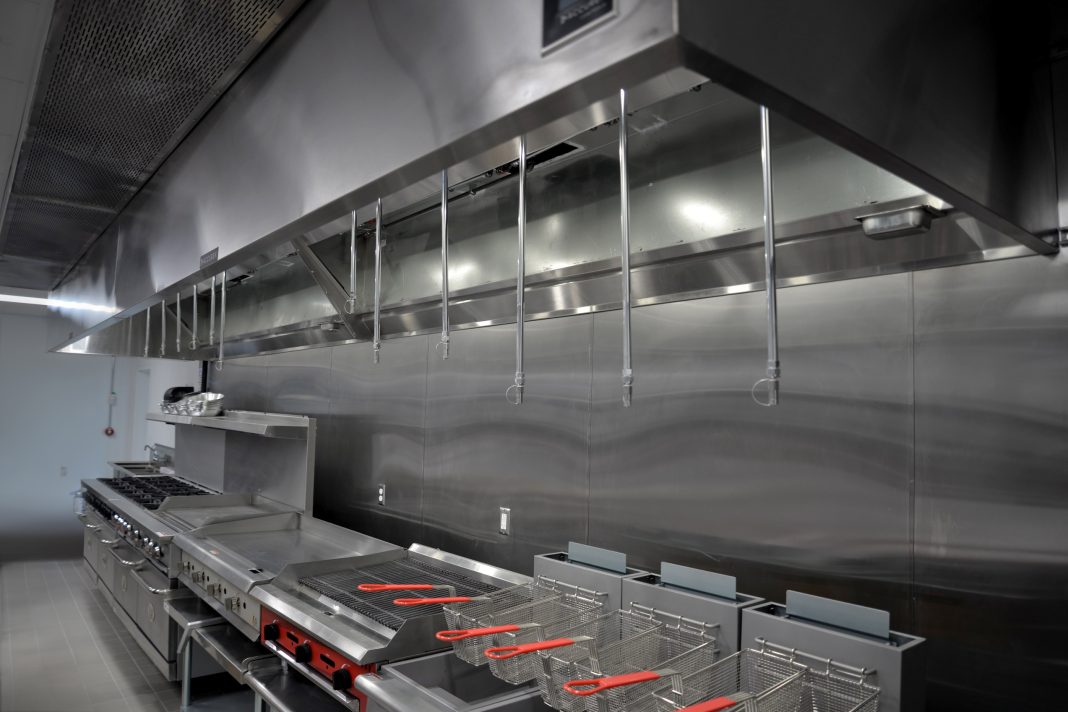Article by: Jan Waldow and Stanislava Garkova
Most fire suppression systems on the market today are designed to meet basic fire safety and building industry standards. However, this doesn’t mean each system meets the specific fire protection needs of every commercial kitchen and its unique appliances. To ensure fire suppression systems are designed, installed and maintained to effectively protect their kitchens, restaurant and hotel owners and operators need to stay on top of management and maintenance best practices. But misconceptions can sometimes get in the way of following those best practices.

Here are several common misconceptions and how to best overcome them to create a safe kitchen environment:
Misconception #1: Kitchen hood protection is a one-design-fits-all approach
In commercial kitchens, automatic fire suppression system components like fusible links and nozzles are typically housed in the plenum of exhaust fume hoods. This placement of key components is important and allows them to protect the cooking appliances underneath the hood, such as ranges, fryers and griddles, which pose the greatest fire risk in a kitchen.
Unfortunately, some owners and operators may assume that one hood-based kitchen fire protection system that works well for one of their kitchens will work well in another. While this can be true for standardized chain restaurants, it is often unsuitable for independent hotels, fine dining restaurants, bars, cafes or catering operations.
That’s because in nonstandardized operations, cooking appliance arrangements are rarely identical, due to the size and space of the kitchen, restaurant and building – or even based on a chef’s preferences. Even similar cooking appliances can vary in design and operate at different temperatures. This is why it’s critical for the fire suppression system’s detection devices to align with the temperature ratings of the various appliances they protect. For example, a charcoal grill can produce a deep-seated fire, which requires a different suppression technique than a fryer.
Appropriate fusible links achieve these temperature ratings, functioning as temperature-sensitive devices strategically positioned within the kitchen hood plenum. When the airflow temperature reaches the fusible link’s rating, the solder melts, activating the fire suppression system effectively.
To ensure reliable operation and compliance, fusible links must be precisely placed according to the system’s installation manual. When a fusible link’s rating aligns with the protected appliance, the system extinguishes fires early, minimizing risks. However, a rating that is too high may delay activation, allowing the fire to grow beyond the suppression system’s capacity.
Conversely, overly sensitive ratings may cause premature activation, leading to unnecessary system downtime and business disruption. Trained and authorized fire suppression distributors can confirm correct fusible links and ensure optimal alignment with protected appliances. These distributors typically consult system manuals and conduct temperature studies, enhancing the overall fire suppression strategy. For new kitchens, operators should collaborate with certified installation companies, providing detailed information about planned appliances and stations. By doing so, installers can recommend tailored fire suppression systems with accurate temperature ratings for maximum kitchen safety. As a result, operators gain the advantage of customized systems offering enhanced protection and compliance with fire safety standards.

Misconception #2: A hazard analysis is only for new kitchens
Restaurants evolve, menus change, and kitchens adopt new cooking technologies. When changes occur, some restaurant owners and operators continue to use the original hood arrangements, overlooking the fact that their fusible links may no longer match the temperature rating of the appliances they are intended to protect. In addition, some appliance-specific suppression nozzles will now be misaligned – rendering some appliances effectively unprotected.
While some kitchens have overlapping fire suppression systems that are designed to maintain protection even when appliance configuration changes, many do not. If the kitchen layout changes and overlapping protection is not in place, it is best to schedule a hazard analysis to ensure proper coverage. During regular system service, a trained and certified engineer or authorized distributor should conduct a design check and hazard analysis to review the kitchen components and determine if they remain compliant with up-to-date fire protection requirements. If needed, restaurant and hotel owners can also request a hazard analysis from the distributor who installed the original system.
It’s important to work with an authorized distributor that understands fusible link and nozzle needs for each specific appliance. The distributor should also be familiar with UL 300, a fire suppression standard for commercial kitchens that is more rigorous than others because it tests suppression products for the worst possible scenarios.
Misconception #3: If I can’t see it, I don’t need to clean it
Regular cleaning is essential to maintaining a compliant, reliable fire suppression system. NFPA 96 establishes how often specific commercial kitchen elements should be cleaned. It is the restaurant operator’s responsibility to make sure the kitchen is cleaned according to that schedule. NFPA 96 guidelines set the minimum requirements for cleaning. If components like hoods or nozzles need to be cleaned before the schedule dictates, they should be cleaned immediately to prevent buildup of flammable product.
Different cuisines generate varying amounts of grease that evaporate and stick to the hood and the elements in it, including fire suppression system components. Over time, grease accumulations on these components impede system performance. Sometimes, these accumulations go unnoticed because they are contained within the hood and behind filters instead of on readily visible surfaces, like stovetops or countertops.
Thankfully, routine maintenance provides an opportunity to clean hard-to-see areas. For example, according to NFPA standards, fusible links are to be replaced every 6 months, or before. Link replacement requires the removal of filters, which exposes fire suppression system components like detection links, nozzles and piping. This is an ideal time to clean them. Often, the fire suppression distributor can make these observations and recommend if components should be cleaned.
The best way to ensure timely service is by having a maintenance contract for the fire suppression system. The contract should be with the authorized, trained and certified distributor for that specific fire suppression system. This ensures that correct, original parts are used, since nonapproved parts can void the system’s warranty. The distributor will also ensure the system is maintained according to regulatory standards and the manufacturer’s recommendations. During maintenance calls, they can assess any cleaning needs or changes in the kitchen that might require fire suppression system updates.
Ensuring effective fire suppression in commercial kitchens
Common misconceptions can prevent restaurant owners and operators from using the right fire suppression system components and keeping their systems in good operating order. By coordinating with the right teams and asking the right questions, owners and operators can ensure their system is dependable, compliant, UL 300 tested and listed, and meets design, installation and maintenance best practices.
It’s helpful to work with a fire suppression provider like Johnson Controls who offers a wide range of technologies to meet your specific needs and has the restaurant industry experience to ensure your space is properly protected for years to come.
For resources and videos on protecting your commercial kitchen, go to ansul.com/food-business-gulfme










